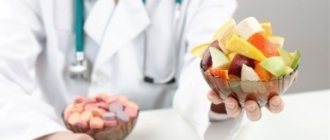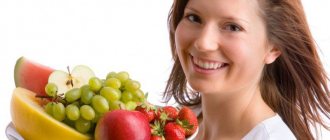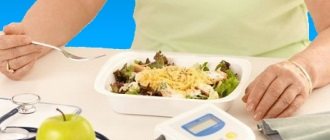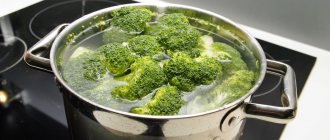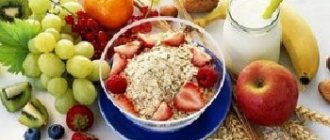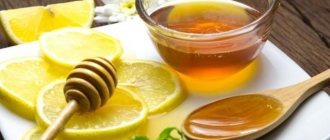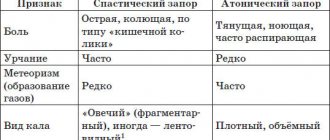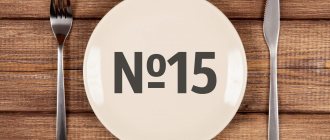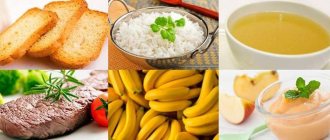The text is for informational purposes only. We strongly urge you not to use diets, resort to any therapeutic menus or fasting without medical supervision. We recommend reading: “Why you can’t go on a diet on your own.”
Nutrition for hypertension is the most important component of antihypertensive treatment aimed at lowering blood pressure. If you do not control your diet, the disease will only progress. The most common causes of death among hypertensive patients are: pathologies of the heart and blood vessels (stroke, myocardial infarction), renal failure, complications of the nervous system.
The goals of diet therapy: correction of metabolic disorders (especially cholesterol), improvement of the functional state of the heart muscle, normalization of the parameters of the blood coagulation system, increasing the elasticity of blood vessels, increasing the synthesis of neuroregulatory hormones (serotonin and dopamine, which prevent mood swings).
What foods lower blood pressure in humans?
A blood pressure reading of 140/80 or higher over a long period of time leads to the development of hypertension. If not treated promptly, hypertension can cause stroke and heart attack.
In addition, jumps in blood pressure cause the development of atherosclerosis, kidney failure, and vision problems. Increased blood pressure is observed in most pregnant women.
The causes of hypertension are bad habits, stress, obesity, genetic predisposition, low activity, and lack of physical activity. Doctors list not only alcoholism and smoking as bad habits.
Food culture is a factor on which a person’s well-being depends. Fast food, unplanned snacks, high-calorie foods, deficiency of vitamins and minerals, reluctance to cook food at home - this is exactly what the diet of a modern person looks like.
Hypertensive patients and people who experience short-term surges in blood pressure need to get rid of bad habits and adjust their daily diet. We will find out in more detail what foods you should eat if you have high blood pressure.
Fermented milk and fermented products
When blood pressure rises, blood vessels narrow; therefore, in order to lower it, it is necessary to include foods that dilate blood vessels in the diet. The expansion process is affected by lactic acid contained in dairy and fermented products. To stabilize blood pressure, you need to consume daily:
- cottage cheese,
- kefir and other fermented milk drinks,
- pickled vegetables,
- soaked fruits.
Fruits and vegetables to lower blood pressure
The menu for hypertensive patients should include a wide variety of vegetables and fruits. Beetroot is the leader in its beneficial qualities. It is recommended to use beet juice diluted 1:1 with water. First courses made from beets, salads from fresh vegetables, and vinaigrettes are useful.
Potatoes will be beneficial in small quantities. Cabbage, spinach, onions, garlic, and any legumes stabilize blood pressure. Among fruits, preference is given to bananas, grapes, and citrus fruits.
Table No. 10
There is a special diet for hypertension and atherosclerosis - table No. 10. Its main criteria are avoidance of salt consumption, and you should also drink no more than 1.2 liters of liquid per day. Another mandatory measure of the tenth diet is reducing the calorie content of food. For hypertension, eating according to these rules will help saturate the body with essential microelements. These substances help normalize fat metabolism, so that they are not deposited in the liver and blood vessels.
That is why diet therapy involves eating foods that are quickly digested and prepared only by baking, boiling or steaming. Proper nutrition for hypertension should contain a certain amount of calories. The calorie content of food eaten should not exceed 2500 kcal. in a day. It is better to cancel salt or reduce it to 4 g per day.
The exact scheme of the daily menu should include about 70 g of fat (20% of which comes from vegetable fats), carbohydrates should be about 400 g, and proteins should be 90 g (no more than 50% of which should be of animal origin). For hypertension, a diet according to these rules is necessary, as it will prevent the development of atherosclerosis.
It should be noted that you should not eat if you have hypertension:
- Fresh baked goods. A diet for arterial hypertension involves eating stale, slightly dried bread, which is made from flour with bran.
- Baked goods and puff pastry are prohibited, as these products contain sugar and margarine, which are contraindicated for hypertension and atherosclerosis.
- Duck and goose meat, offal.
- Fatty dairy products, salty cheese.
Added to the list of what you cannot eat are sauerkraut, salted and pickled vegetables, raw onions and garlic, radishes, mushrooms, spinach, and sorrel. You can't eat lard either.
The high blood pressure diet suggests that the meat should first be boiled in one water, which should be drained after the meat has boiled. Next, it is boiled in new water, and only after that the dish can be eaten. Meats allowed include turkey, chicken, veal, beef, and rabbit.
Diet for arterial hypertension No. 10 allows pasta from durum wheat and cereals. Only their preparation must be correct - cook with water or milk, without adding salt and sugar. This diet for stage 2 hypertension is also effective, and medical practice proves this.
Drinks to lower blood pressure
For hypertension, it is recommended to increase the consumption of drinking water and healthy drinks:
- fermented milk products - kefir, fermented baked milk, yogurt,
- fresh fruit and vegetable juices prepared at home without heat treatment,
- hot cocoa,
- hibiscus tea drink,
- valerian decoction,
- coconut water.
Many people know about the benefits of fermented milk drinks and fresh juices, but cocoa is unfairly considered a harmful product. In fact, cocoa prevents the formation of blood clots and this drink is recommended for people suffering from hypertension.
Coconut water is one of the natural diuretics and perfectly removes sodium salts.
Fish
Marine. Even better - red. Although other varieties are suitable for the prevention and control of disorders.
One of the possible reasons for a stable increase in blood pressure is hypercholesterolemia.
That is, the actual increase in the concentration of lipids in the blood. As this condition develops, atherosclerotic plaques appear. Fatty deposits on the walls of arteries.
Fish contains polyunsaturated fatty acids, which naturally bind and remove harmful cholesterol.
With regular consumption of seafood-based dishes, you can achieve high-quality correction of the state of the cardiovascular system.
This also includes shrimp and other products. Not counting crab sticks and semi-finished products, saturated with salt in horse doses.
First aid - how to quickly lower blood pressure?
There are a number of products that can quickly reduce blood pressure. All hypertensive patients should be able to provide first aid to themselves in case of a sharp rise in pressure. Chili pepper and cayenne pepper, taken with tea or honey, will have an almost immediate effect. As a medicine you will need a teaspoon of ground pepper.
People who constantly use turmeric in their food recipes will never know what high blood pressure is. Turmeric is a natural antioxidant that has antimicrobial properties and is responsible for cholesterol levels.
The rapid action of garlic during a surge in blood pressure is explained by the content of the substance allicin in this healthy vegetable, which participates in the body's metabolic processes and dilates blood vessels.
Please note that if there is a sharp increase in blood pressure, you cannot stop taking medications. Products that quickly reduce blood pressure become only an aid.
Nuts
Walnuts, hazelnuts, almonds. Contains arginine and citrulline. Both substances have the ability to remove cholesterol.
In the early stages, it is also possible to eliminate plaques based on it. In addition, they stabilize blood sugar levels.
To lower blood pressure, it is enough to eat 1-2 nuts per day. It is no longer worth it, including due to the high calorie content of the product.
Prohibited foods for hypertension
If you want to stabilize your blood pressure, you will have to completely eliminate some foods from your diet. The following are contraindicated for hypertensive patients:
- Confectionery products are any high-calorie products containing large amounts of sugar.
- Animal fats - butter, fatty meat broths, smoked and dry-cured pork products, margarine.
- Consuming salt.
The best option for hypertensive patients would be a salt-free diet, excluding animal fats and replacing them with vegetable oils. It is recommended to exclude fried foods for baked and boiled ones. Try not to heat cooked food in a frying pan, but rather eat freshly prepared foods.
What to exclude or limit?
Products that increase blood pressure
Patients with high blood pressure are prohibited or limited:
- eggs - fried or boiled until the yolk is firm;
- partially fish menu - fatty fish varieties (Caspian sprat, herring, mackerel, eel, halibut), caviar, as well as those prepared by smoking and canning;
- first courses - broths cooked from fish and meat, as well as mushrooms;
- vegetable preparations - salted and pickled;
- some vegetables and herbs - onions, spinach, rare, radishes, garlic;
- fatty meat - duck, goose, as well as liver, kidneys, other offal, smoked meats, canned goods;
- grape juice;
- flour - fresh, flaky, rich pastries;
- dairy products - fatty (above 40%) and salty types of cheese;
- animal and cooking fats;
- dishes with legumes and mushrooms.
Microelements that help reduce blood pressure
To correctly create a menu, it is not enough to know products for lowering blood pressure. It is necessary to understand what beneficial substances they contain and help the normal functioning of the body.
Folic acid
Folic acid (vitamin B) is an antioxidant; in the human body it is responsible for the removal of toxins and affects hematopoietic processes. Folic acid is prescribed to women at the beginning of pregnancy; moreover, this substance helps lower blood pressure. Replenish vitamin B deficiency with:
- legumes - beans or peas,
- citrus fruits - grapefruits, limes, oranges, lemons,
- nightshades - sweet peppers and tomatoes.
Please note that greens are high in folic acid. In summer, hypertensive patients are recommended to eat onion, celery, and parsley. In winter, spinach will help replenish folic acid deficiency.
Ascorbic acid
Vitamin C (or ascorbic acid) regulates cholesterol levels, participates in the breakdown of fats, and prevents blood clots. Ascorbic acid is present:
- in rosehip decoctions,
- berries of wild and garden crops - currants of any variety, raspberries, cherries, chokeberries, cranberries, lingonberries,
- in garlic
- fresh apples,
- citrus fruits.
Minerals
Any foods containing potassium, magnesium or phosphorus lower blood pressure. Magnesium is responsible for reducing the tone of the walls of blood vessels, phosphorus strengthens them and is responsible for the breakdown of fats. Potassium is involved in the removal of sodium salts from the body. You can get your daily requirement of these minerals by consuming:
- seafood - fish, granular caviar, seaweed,
- nuts – pine, peanut, almond, walnut,
- sunflower seeds,
- dried fruits - raisins and dried apricots.
Please note that sea fish should be consumed baked, boiled or stewed, as well as as part of first courses. Salted, dried and smoked fish are excluded from the menu for hypertensive patients.
Clinical picture
Hypertension is a pathology of the cardiovascular system, characterized by a persistent increase in blood pressure. Today, every third person on the planet suffers from the disease (mostly people in the older age group).
Content:
- Clinical picture
- Basic principles of nutrition
- Products that lower blood pressure
- Sample menu
- Bee products against hypertension
- Conclusion
The unit of measurement for blood pressure is considered to be millimeters of mercury. The value of arterial indicators is expressed by two numbers: the larger (systolic) and the smaller (diastolic). Moreover, the first value is recorded during maximum contraction of the heart muscle, and the second - at the moment of complete relaxation of the myocardium.
Normally, systolic pressure varies between 100 - 125 millimeters of mercury, diastolic in the range of 70 - 85. If these indicators exceed 140 (upper) and 90 (lower) units, arterial hypertension occurs.
In the pharmaceutical industry, it is customary to distinguish between 3 degrees of severity of pathology.
Mild (preclinical)
This stage of the disease is characterized by frequent abrupt pressure drops (short-term). At the same time, the systolic indicator varies in the range of 140 - 159 units, and the diastolic in the range of 90 - 99 units.
To correct preclinical hypertension, it is advisable to use folk remedies (since medications are not required).
Moderate (borderline)
The second degree of pathology is accompanied by an increase in upper pressure to 179 millimeters of mercury, and lower pressure to 109 units.
To reduce arterial values, pharmaceuticals (hypotonic drugs) are used. In the absence of proper therapy, a hypertensive crisis is possible, since the indicators remain at the borderline (upper) level for a long time.
Severe (chronic)
At the 3rd stage of the disease, systolic pressure exceeds 180 units, and diastolic pressure exceeds 110. Arterial parameters can only be stabilized with the help of medications.
If the disease is not stopped for a long time, irreversible changes develop in the “target organs” (kidneys, heart, brain, fundus vessels). At the same time, uncontrolled hypertension entails severe complications (strokes, encephalopathy, heart attacks, cognitive disorders, dementia, renal failure, etc.).
Symptoms characteristic of the first two stages of the pathology:
- dizziness;
- tinnitus (fullness);
- headache;
- fatigue;
- irritability;
- puffiness of the face;
- insomnia;
- “double vision”;
- swelling of the eyelids.
At the third stage of pathology, the following disorders occur:
- pain in the heart area;
- nausea;
- feeling of lack of air;
- tachycardia;
- redness of the skin;
- impaired coordination of movements;
- cognitive disorders (decreased memory, attention);
- blurred vision;
- "weakness" in the limbs.
Remember, timely diagnosis of the disease will help avoid serious complications: stroke, heart attack, heart failure.
High blood pressure in women - diet rules
Women tend to find it easier to adjust their diet and bad habits than men. Women drink alcohol less often and are less likely to suffer from nicotine addiction. However, more often than not, men have food addictions and tend to “eat up” stress with junk food. What diet rules for hypertensive patients should women follow:
- exclude fried foods,
- give up canned vegetables (fruits) and pickles, use fermented foods as a replacement,
- limit salt intake to 5 ml/day,
- exclude flour and sweets,
- If possible, replace meat dishes with fish,
- The last time to eat is no later than 3 hours before bedtime; in case of severe hunger, you can eat fruits, sugar-free juices, and fresh berries.
